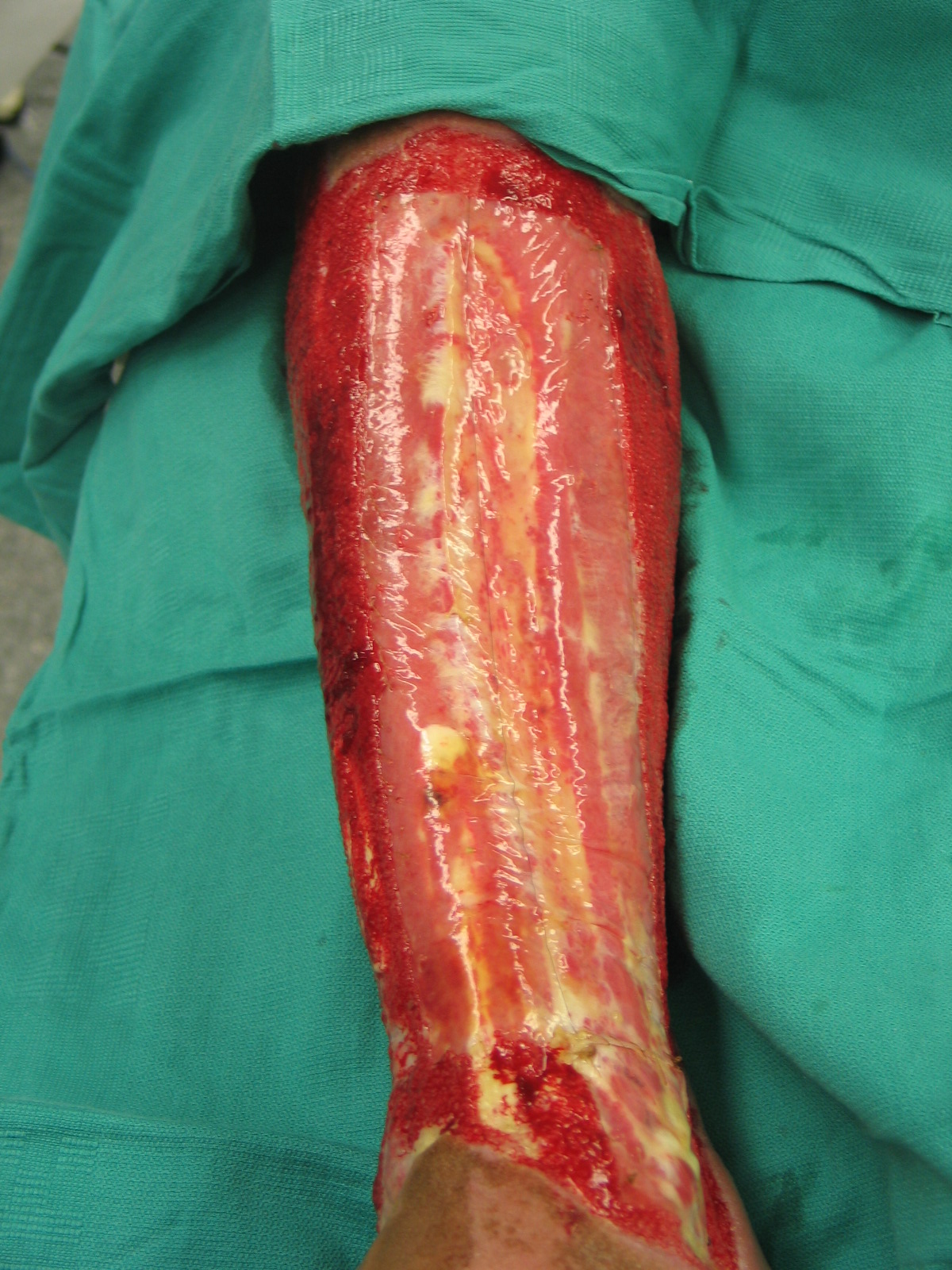Thursday, March 23, 2006
9787
Complex Wound Management with Artificial Dermal Regeneration Template
Background: Necrotizing fasciitis is a soft tissue infection in which necrosis of the fascia and subcutaneous tissue occurs. Necrotizing fasciitis presents with disproportionate pain, localized erythema, and skin discoloration with vesicle formation. As the disease dissects along fascial planes, an area of deep necrosis develops along with eventual signs of systemic toxicity and sepsis. Management of necrotizing fasciitis consists of resuscitation and stabilization of the patient, aggressive surgical debridement of all nonviable tissue, and the administration of broad spectrum antibiotics. Local flap coverage or microvascular free tissue transfer are the preferred techniques in the surgical reconstructive ladder.
Purpose: To investigate alternative coverage of large complex open wounds
Methods: We present a case of severe necrotizing fasciitis in an insulin dependent diabetic who refused free autologus tissue transfer as an adjunct to his debridment. The artificial dermal substitute, IntegraŽ has emerged as an adjunct to split thickness grafts or tissue transfer. We report on an alternative surgical reconstruction consisting of aggressive debridement and IntegraŽ/STSG placement in the reconstruction of a complex leg wound in which there was a large area of exposed bone without periosteum.
Results: In our case, the use of IntegraŽ prevented the amputation of the affected leg.

See more of Reconstruction/Burn
Back to 2006src Complete Scientific Program
